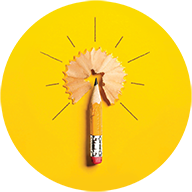Changing Models of Schools
Early in the 2023/2024 school year, Jonathon Medeiros and a handful of his Kauaʻi High School Future Teachers of Hawaiʻi club members took a two day huakaʻi (trip) to Oahu. This service learning trip was part of the learning progression for the club, which is focused on student advocacy and social justice. With the help of Josh Reppun, retired Hawai’i State Supreme Court Justice Mike Wilson, the people at What School Could Be, and other amazing educators, the students began their huakaʻi by gathering together to think and talk about the purpose of education/school. Ostensibly, they were traveling to Oahu to learn from others, but really the adults were there to learn how to keep pushing on the edges of the ideas of “school.”
I know Satre said that hell is other people (a notion that still makes me smile), but I think it is important to note that, while hell might be other people, school is also people; school is the people who make it.
I suppose for some people, school is hell, defined by walls, doors, bell schedules, norms that predate all of us at this point. But it doesnʻt have to be. Years ago, I riffed on this idea, asking about the shape of our schools, and I rather naively suggested that if we stand in a circle and look in, regardless of role or title, we all see the same thing: each other. I wondered then, as I do now, about what a school would be like if we made that idea the actual blueprint for school design.
Josh Reppun has been exploring What School Could Be for years, through his podcast and other community work, with much more clarity and efficacy than I have been able to muster. As he does his exploratory work, simplicity is often the most potent catalyst for deep curiosity as he flips the idea to ask people “What could be school?” So, instead of “can school be a circle?” maybe we are pushed to ask things like “how is this (fill in the blank) my school today?”
Last fall, ten of my Future Teachers of Hawaiʻi club members, along with a handful of educators from across the “educational landscape,” gathered for a day of intense learning, though others might have called it “talk story.” We sat in Justice Wilsonʻs house on Kawela Bay, with public, private, and charter school teachers and administrators while Dr. Chad Miller led us through some Philosophy for Children (P4C) protocols focused on who we are, why we are here, what our responsibility is, and what could be school.
When we sat together in that circle in Justice Wilsonʻs house, Mr. Reppunʻs repeated question frightened and excited us all. “What could be school?” What is the purpose of school? We put these questions into the middle of the room, and then we talked, all seeing the same thing: each other.
The conversation, deftly led by Dr. Miller through the P4C community ball protocol, was wide ranging and powerful. We sat in a circle, students, Supreme Court Justices, teachers, administrators, podcast hosts, community organizers, all of us equal in our kuleana, our reciprocal responsibility, to this question of what school could be.
As we talked, many of the students (and the adults, too) passed through laughter and tears and back, moved by each personʻs ideas. They spoke about personal responsibility, about place, about stoking curiosity, about learning while doing, about the need to feel pushed and supported, challenged and loved, connected… they never spoke of buildings or bell schedules.
Most of the students arrived that morning not really planning to be teachers (as I often say, I'm still not sure I want to be a teacher when I grow up…), but they left knowing that they already were teachers. They heard from each other, from their classmates and from professors of education and philosophy, from podcast hosts and from Supreme Court Justices. They heard various takes on what could be school and on our responsibilities to each other and the places we live. They were listened to and responded to as equals (that's what the circle does), and we left excited about what we could do back in our own communities around education.
One student, his eyes welling up, said that he’d never wanted to be a teacher “but now I know I might have to be a teacher.” He said that he now realized he needed to blend his Hawaiian cultural interests, his identity as kanaka maoli (native Hawaiian), with a vision of public school that serves all and yet values and centers the place that it is in, that builds pilina (connection) to place and people.
Another student was so excited by the community circle and P4C discussion model, she is now convinced that all meetings and groups need to operate this way. Upon our return to our traditional public school, she made the new club members create their own community ball in hopes of changing the way we operate, even on a small level.
This is how some schools, some communities, some teachers are changing school models and instructional practices: by making space for students to be, to think, to know that school and community are right here where our feet are, where we live, wherever we learn.
School is that connection between us, not the buildings over our heads. School is the people who push us to learn and to connect. School is where we find it, to paraphrase surf legend Gerry Lopez.
But we have to look first.
Jonathon Medeiros teaches and learns about Language Arts at Kauaʻi High and he frequently writes about education and the power of curiosity, which kills boredom. If you change all of your mistakes or regrets, you’d erase yourself. Jonathon walks, paddles, surfs, and enjoys spending time with his brilliant wife and daughters. To read more of his work, visit jonathonmedeiros.com.

